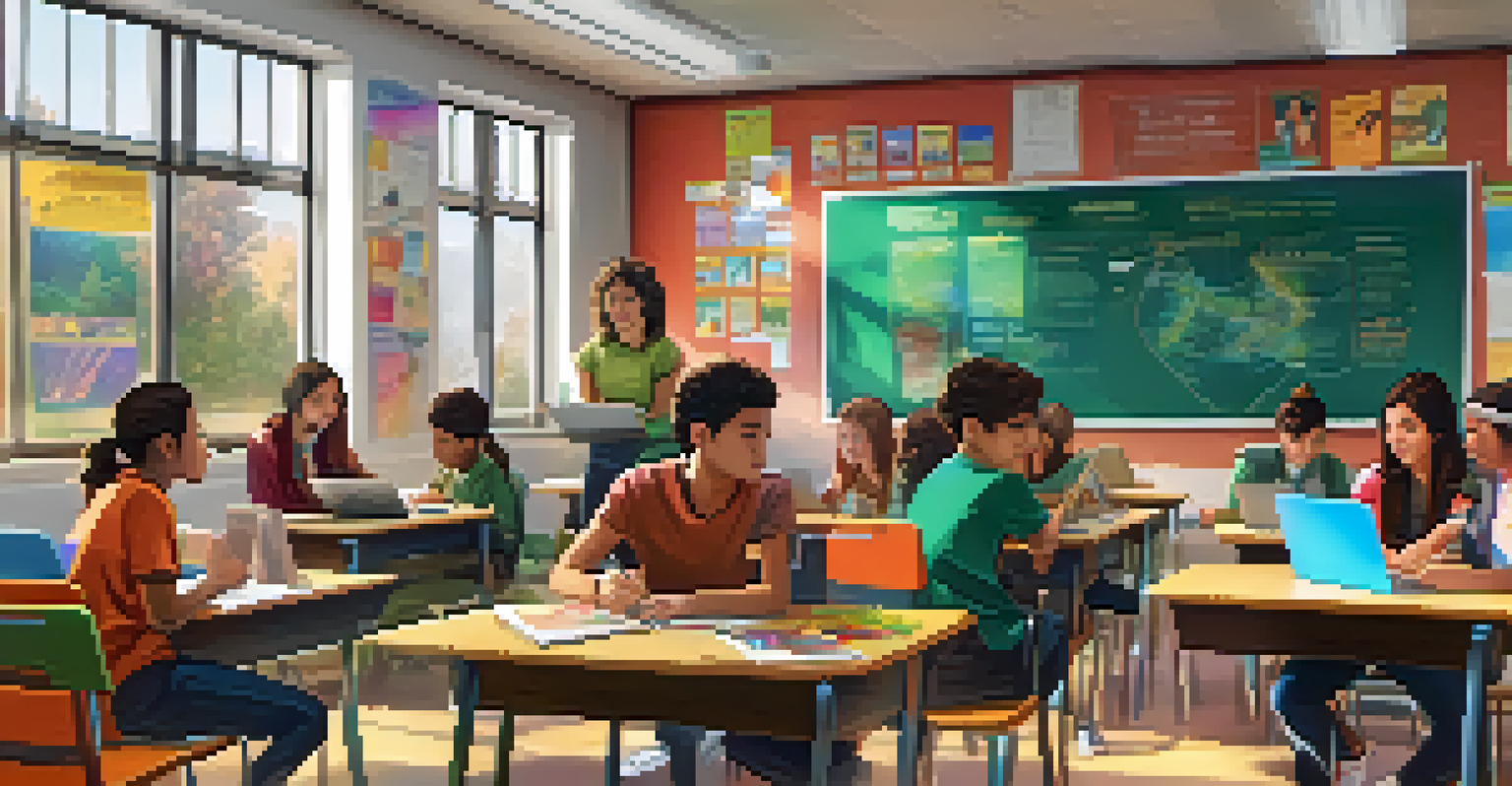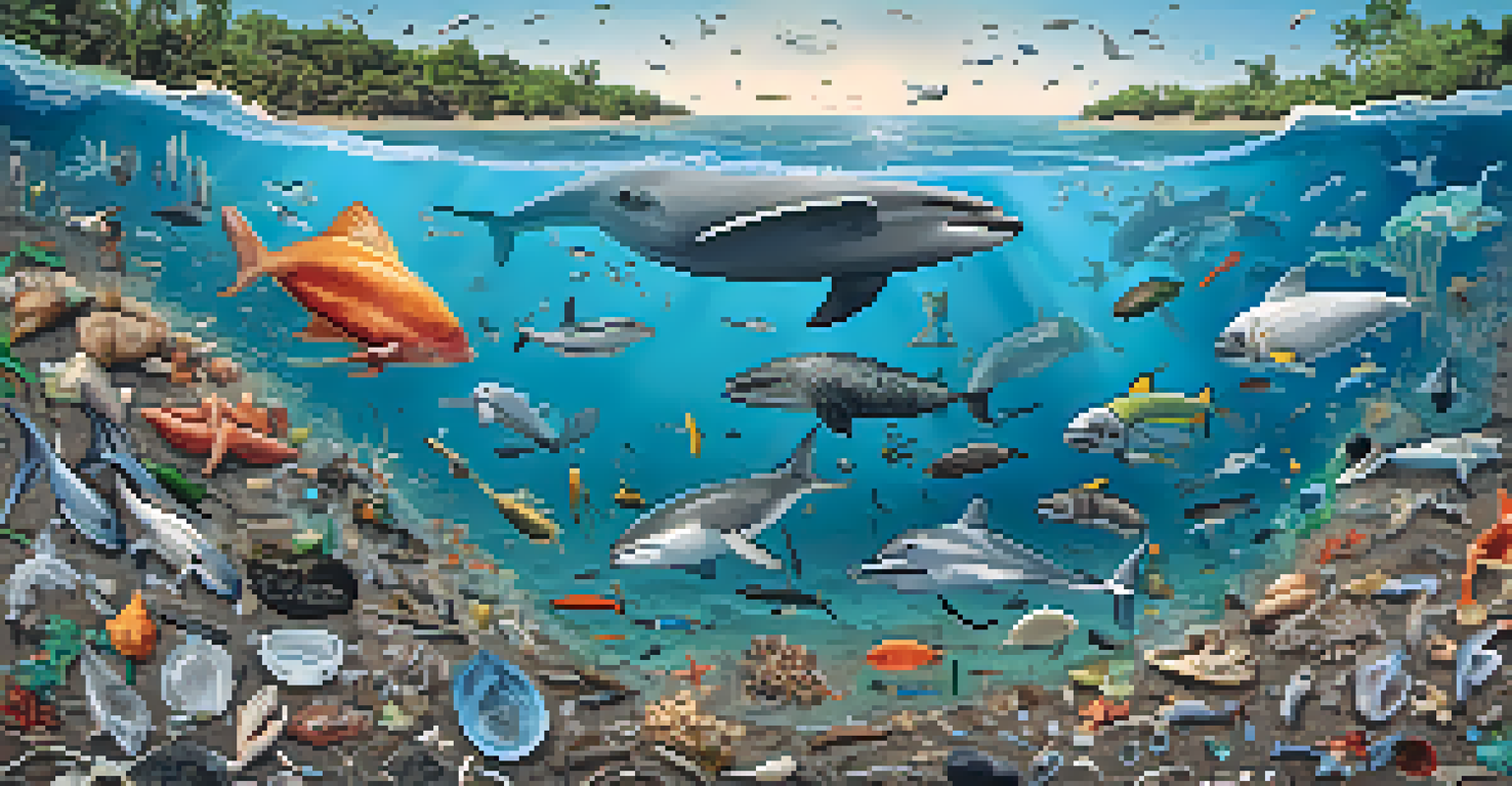Utilizing Digital Storytelling for Environmental Awareness

Understanding Digital Storytelling and Its Impact
Digital storytelling blends narrative with multimedia elements to convey messages effectively. It engages audiences through videos, podcasts, and social media, making complex ideas more digestible. This method is particularly powerful for environmental issues, as it can evoke emotions and drive action.
Storytelling is the most powerful way to put ideas into the world today.
By using personal stories, visuals, and sound, digital storytelling can humanize environmental challenges. For example, sharing a local community's struggle against pollution can create a profound connection with viewers. This emotional engagement often inspires people to learn more and take action.
Furthermore, digital storytelling can reach a global audience, breaking geographical barriers. With the rise of social media, stories about environmental issues can be shared widely, amplifying their impact. This widespread reach is crucial for fostering a collective response to pressing environmental concerns.
The Role of Social Media in Storytelling
Social media platforms are essential for disseminating digital stories. They allow for rapid sharing and engagement, making it easier for stories to go viral. A compelling story about climate change can spark conversations and mobilize communities instantly.

For instance, campaigns on Instagram and Twitter can utilize hashtags to unite voices around a common cause. Users can share their unique experiences related to environmental issues, creating a tapestry of narratives. This collective storytelling amplifies awareness and invites more participation.
Digital Storytelling Drives Engagement
By blending personal narratives with multimedia elements, digital storytelling effectively engages audiences and inspires action on environmental issues.
Additionally, social media encourages the use of visual content, which can be more impactful than text alone. Images and videos can capture attention quickly and convey emotions effectively. As a result, a powerful visual story has the potential to inspire immediate action and increase advocacy.
Creating Compelling Environmental Narratives
To create a compelling environmental narrative, start with a relatable character or situation. This could be a person affected by pollution or a wildlife species facing extinction. By establishing a connection, you can draw the audience into the story and make them care about the outcome.
The greatest threat to our planet is the belief that someone else will save it.
Incorporating statistics and facts can help ground the story in reality, providing necessary context. For example, mentioning the number of plastic bottles discarded annually can highlight the urgency of reducing plastic waste. This combination of personal stories and hard data makes the narrative both engaging and informative.
Finally, ending with a call to action is crucial. Encourage viewers to participate in local clean-up events or advocate for policy changes. This not only empowers the audience but also fosters a sense of community and shared responsibility toward the environment.
Leveraging Multimedia for Greater Impact
Multimedia elements such as images, videos, and infographics enhance storytelling. They make complex information more accessible and engaging for diverse audiences. A short video summarizing a community's environmental efforts can be far more impactful than a written report.
For example, using time-lapse photography to show deforestation can powerfully illustrate the issue's severity. Similarly, infographics can distill complicated data into digestible visuals, making it easier for viewers to understand the implications. This multimedia approach can captivate audiences and encourage them to share the message.
Social Media Amplifies Reach
Social media platforms facilitate the rapid sharing of environmental stories, allowing diverse voices to unite and mobilize communities around pressing issues.
Moreover, incorporating sound elements, like interviews or natural sounds, can deepen emotional resonance. A soothing soundscape of nature can remind viewers of what’s at stake, making them more likely to act. By leveraging multimedia effectively, digital storytelling can create a lasting impression.
Engaging Local Communities Through Storytelling
Digital storytelling can empower local communities to share their environmental challenges. By providing a platform for their voices, these stories can highlight specific issues and mobilize collective action. Community-driven narratives foster a sense of ownership and responsibility.
For instance, a small town facing water pollution can document their journey through video diaries. Sharing their experiences can attract attention from broader audiences and motivate support from environmental organizations. This grassroots approach not only raises awareness but also builds solidarity.
Additionally, involving community members in the storytelling process enriches the narrative. It allows for diverse perspectives and experiences to be represented. When communities feel heard and valued, they become more invested in finding solutions to their environmental problems.
Educational Institutions and Digital Storytelling
Educational institutions can play a pivotal role in promoting digital storytelling for environmental awareness. By integrating storytelling into curricula, students can learn to express their ideas creatively while addressing real-world issues. This approach fosters critical thinking and environmental literacy.
For example, students can create short films or podcasts about local environmental concerns. This hands-on experience not only educates them about the issues but also equips them with valuable skills in communication and digital media. It encourages them to become advocates for change.
Community Narratives Foster Action
Empowering local communities to share their environmental challenges through storytelling cultivates a sense of ownership and motivates collective solutions.
Moreover, partnerships between schools and local organizations can enhance these initiatives. Collaborating on projects allows students to engage with experts and community members. This connection between education and activism can inspire the next generation of environmental leaders.
Measuring the Impact of Digital Storytelling
Evaluating the impact of digital storytelling is essential for understanding its effectiveness. Metrics such as engagement rates, shares, and comments can provide insight into audience reach and resonance. This data can guide future storytelling efforts and refine strategies.
Surveys and feedback from viewers can also be valuable. Asking audiences how a story affected their views or actions can inform creators about the narrative's effectiveness. This feedback loop helps storytellers improve their craft and better connect with their audience.

Moreover, tracking real-world outcomes, such as increased participation in environmental initiatives, can demonstrate storytelling's tangible impact. When digital stories translate into action, it highlights their power in driving change. This measurable impact can encourage further investment in digital storytelling as a tool for environmental advocacy.